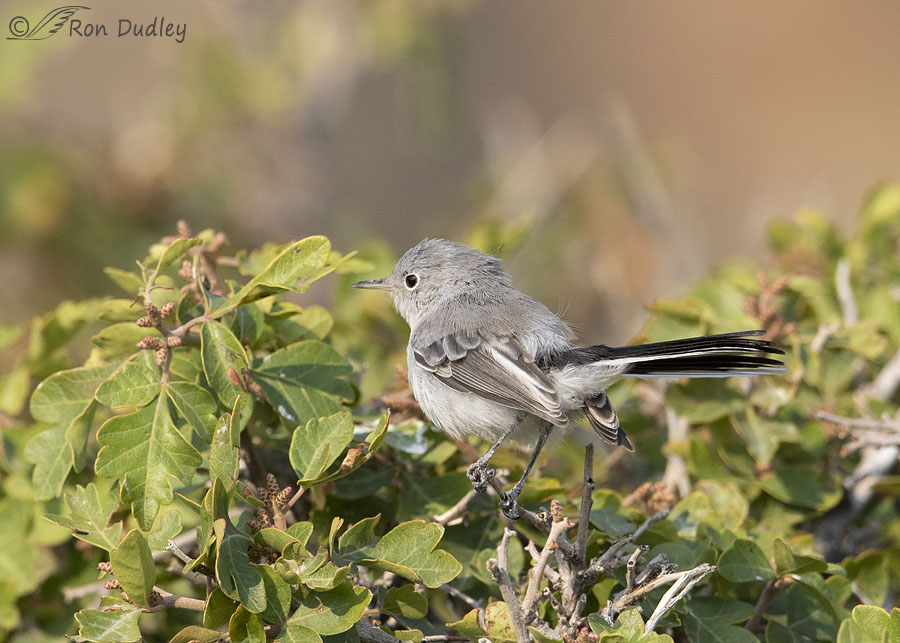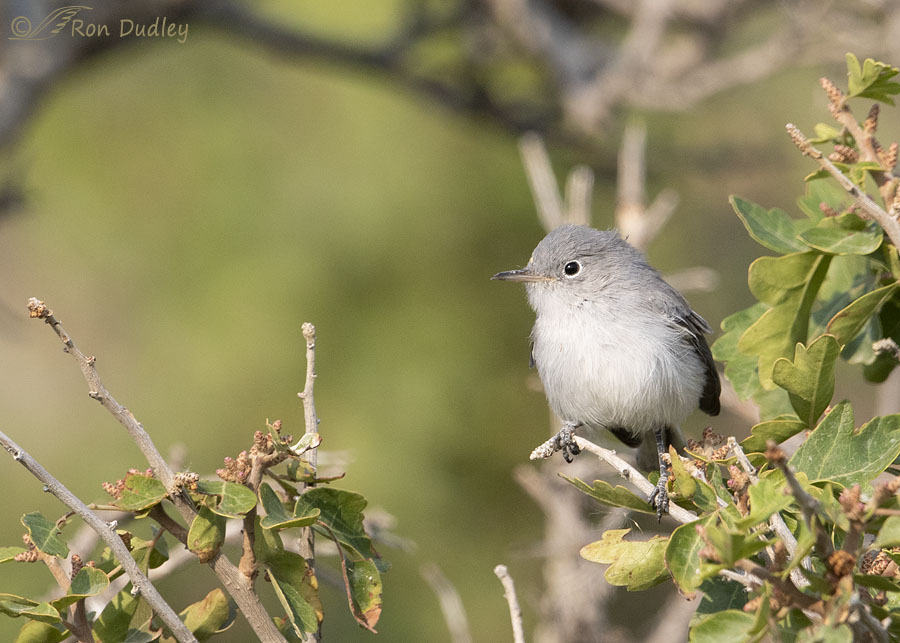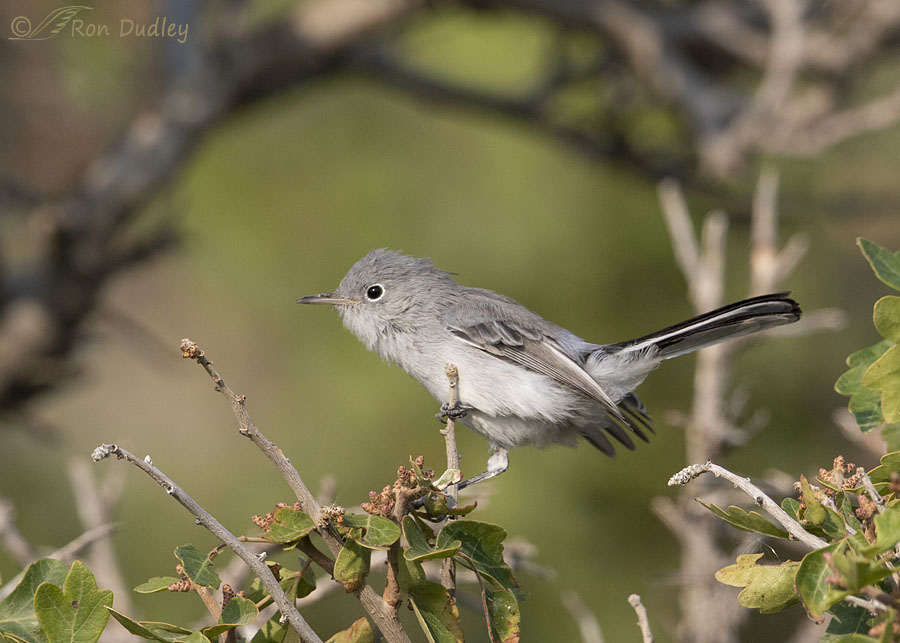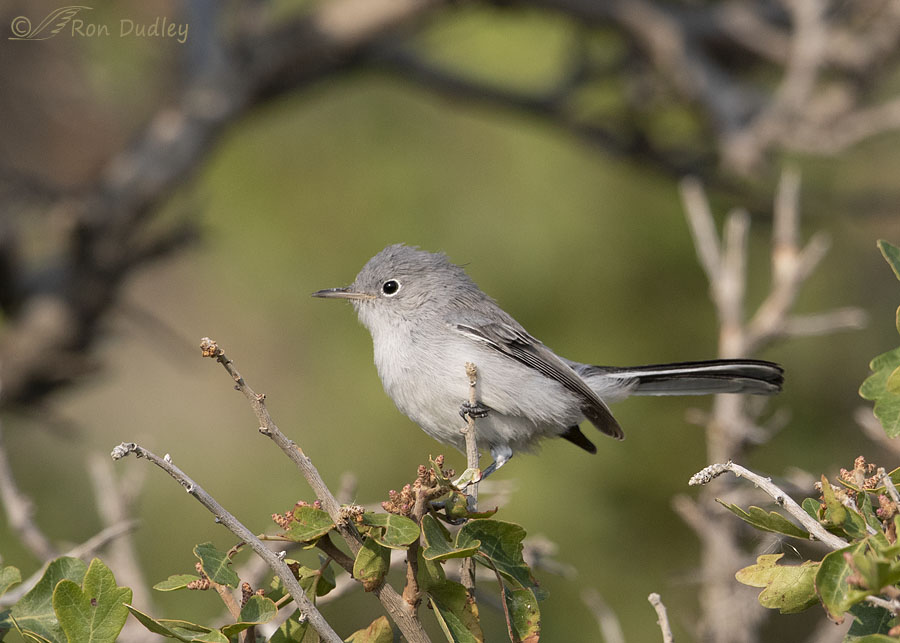Blue-gray Gnatcatchers are tiny and hyperactive. This one from yesterday morning was one of the most difficult photo subjects I’ve ever tried to draw a bead on.

1/2000, f/6.3, ISO 800, Canon 7D Mark II, Canon EF 500mm f/4L IS II USM + EF 1.4 III Extender, not baited, set up or called in
I was attempting to photograph a couple of Sage Thrashers when this little guy popped up out of the bush as a complete surprise to me. This first photo is pretty close to a butt shot but it allows a good look at some of the field marks of the species, including the whites in the wing and tail.
Their unusually long tail constitutes over 45% of their total length.

1/2000, f/6.3, ISO 800, Canon 7D Mark II, Canon EF 500mm f/4L IS II USM + EF 1.4 III Extender, not baited, set up or called in
‘He’ was incredibly agile and quick as he darted through the bush while foraging for tiny insects and spiders. Because of his speed I took more soft shots of him than I can count.
Here he’s about to jump to a new perch but which one would it be?

1/2000, f/6.3, ISO 800, Canon 7D Mark II, Canon EF 500mm f/4L IS II USM + EF 1.4 III Extender, not baited, set up or called in
He chose the closest one, in this shot he had just landed on it.
The previous photo in the burst shows him at the beginning of his jump but that photo was soft so I’m not including it. Because I’d previously been photographing much larger and slower Sage Thrashers I was shooting at f/6.3 and forgot to change my setting for this smaller, faster bird. If I’d been shooting at f/5.6 I’d have had more shutter speed and the jumping shot might have been sharp enough.

1/2000, f/6.3, ISO 800, Canon 7D Mark II, Canon EF 500mm f/4L IS II USM + EF 1.4 III Extender, not baited, set up or called in
In the next shot in the burst he’d settled onto his perch for what is probably the best photo I managed to get of him. To give you an idea of the relative size of this species they weigh significantly less than 1/4th as much as a House Sparrow (6 grams vs 28 grams).
Several of our hummingbirds weigh more than that.
Ron


Definitely has the bill of the flycatcher, gnatcatcher family, if there is such a family. Good captures of this tiny and quick bird.
Thank you, Jane.
So blown away that this little fellow is only 6 grams — that’s 6 small paperclips or 6 US dollar bills. Still can’t seem to wrap my head around that!
He looks exceptionally frenetic in the first and third shots. Kudos to you for getting such sharp images of him.
Thanks very much, Marty. They are tiny birds.
Quite the fluff-butt (or are those rectal bristles 😄) in the first photo. Rare here, but your photos combined with ID tips are helpful.
Good. Thanks, Lyle. Yup, those are closer to rectal bristles. 🙂
Rectal Bristles! 😂😂😂
The little birds ( and this one falls into the tiny category) are super fast aren’t they. And totally unpredictable, putting greased lightening in the shade for being slow and predictable.
You may have soft captures, but the ones you shared are far from soft – and enchanting.
Thank you, EC.
Adorbs! And really lovely pictures of this little sweetie. I read that not only are they near hummer-size, they also build nests like hummers, little cups of plant down, spider webs, lichen, etc. As I said—adorbs! 😉
Interesting, Chris. I didn’t know that about their nests.
Both parents work on those nests. I have watched one waiting while the other bird added its items and wiggled in the nest to get the cup the right size. While they’re building, the flights with nesting material can be pretty rapid.
These are beautiful! I see these down in St George area but they always stay in the rabbit brush and willows. I have a few shots of eyes peeking out and that is about it.
April, I’d love to catch them on blooming rabbit brush.
Precious!! Great shots Ron. Thank you for the sizing references for those of us not familiar with this bird. You mentioned hummingbirds – which in AZ are probably my fav – besides hawks. (Ok, and quail, owls, doves & lovebirds all living in my neighborhood.)
Ha, like many of us you have lots of favorites, Kathleen.
Whata cutie! 🙂 It certainly WOULD be a challenge with it’s small size and “hyper” tendencies! That is a VERY long tail……. 😉
Thanks, Judy.
What a little sweetie. There’s something especially endearing about the way his wing feathers dip past his tail feathers in the first shot …
I like that droopy-wing pose too, Cathy.
A ‘kinglet’ by another name…is what I call this bird! All action. We are probably on the most northern edge of it’s breeding range; I’ve seen them a few times and managed only a few photos. These are great…especially the last photo. Such a sweet innocent bird that you managed a quiet photo of. 😍 Love these.
“A ‘kinglet’ by another name”
That nails it, Kathy. Kinglets are the only other songbirds I photograph that might be as jumpy and quick as this species is.
I agree with the comments – great shots, eye contact, wonderful settings.
Thanks, Dick.
Love these pictures of the gnatcatcher!! I know how fast they can go so kudos to you for capturing the little guy! i think the last 2 are perfect.
Thank you, Joanne.
Excellent series Ron. Actually pretty birds. They remind me of the little grey ultra hyperactive Bushtits that flock into our backyard ready to devour every aphid they can find.
PS: finally got about an hour of much needed rain last evening.
Everett, at first I actually thought this bird might be a bushtit.
Congrats on the rain!
Delightful! So glad you captured this delightful Gnatcatcher on film. We should all have the energy of this diminutive ball of fire…
Yeah, no kidding Alison. It made me tired just to watch him.